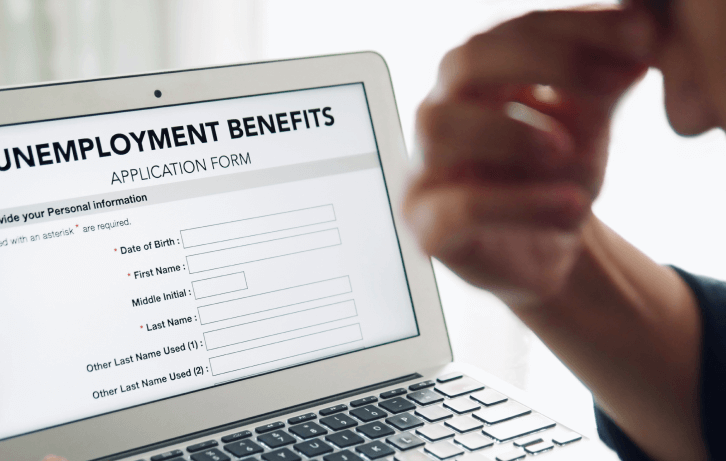Maximizing Payments From Unemployment Benefits
In today's ever-changing job market, understanding how to navigate unemployment benefits is crucial. Whether it's due to layoffs, company closures, or other unforeseen circumstances, knowing the ins and outs of the unemployment system can provide a vital financial lifeline. This comprehensive guide aims to demystify the process of claiming unemployment benefits, outlining the steps involved, the duration of these benefits, and how much one can expect to receive. This section provides a detailed and informative overview of unemployment benefits, offering clear guidance on how to claim them, and insight into the duration and amount of benefits one might expect. It's designed to be a helpful resource for anyone facing unemployment and needing to understand the benefits available to them.

Understanding Unemployment Benefits
Unemployment benefits are payments made by the state or other authorized bodies to unemployed individuals who meet specific eligibility criteria. These benefits aim to provide temporary financial assistance while the individual searches for new employment.
Eligibility Criteria
- To be eligible for unemployment benefits, you must meet several criteria, including:
- You must be unemployed through no fault of your own (e.g., layoffs).
- You must have worked in your job for a minimum period, as defined by your state.
- You must be actively seeking employment.
- The specific criteria can vary by state, so it's essential to check with your local unemployment office for detailed information.
How to Claim Unemployment Benefits
Step 1: Gather Necessary Information
Before applying, you'll need several pieces of information, including your social security number, driver's license or state ID, employment history for the past two years, and details of your former employment (e.g., company name, address, dates of employment).
Step 2: File Your ClaimYou can file your claim online, by phone, or in person at your local unemployment office, depending on your state's process. Filing online is often the fastest and most convenient method.
Step 3: Wait for Approval
Once you've submitted your claim, there will be a processing period during which your eligibility is determined. This period can vary but typically ranges from one to three weeks.
Step 4: Maintain Eligibility
After approval, you must regularly certify that you are still unemployed and actively seeking work. This usually involves filing a weekly or bi-weekly claim online or by phone.
Duration of Unemployment Benefits
The duration of unemployment benefits can vary significantly from state to state. Typically, benefits are available for up to 26 weeks, but this can be shorter or longer depending on the state's unemployment rate and specific laws. During times of high unemployment, such as economic recessions, federal extensions may be available, extending the duration of benefits.
Extended Benefits
In some cases, when the unemployment rate is exceptionally high, additional extended benefits may be available beyond the standard duration. These are typically funded by the federal government and can extend the benefit period by several weeks or months.
Amount of Unemployment Benefits
The amount of unemployment benefits you can receive is based on your previous earnings. It's generally a percentage of your average earnings over a set period, often the last 52 weeks of employment.
Calculation of Benefits
The specific formula for calculating benefits varies by state. However, it typically involves identifying your highest-earning quarter in the base period and applying a percentage to that amount. The aim is to replace approximately 50% of your previous income, though this can vary.
Maximum and Minimum Benefits
Each state sets maximum and minimum benefit amounts. The maximum is the highest amount a claimant can receive each week, regardless of their previous earnings, while the minimum is the lowest amount a claimant can receive.
Tips for Successfully Claiming Unemployment Benefits:
Act Quickly
It's important to file your unemployment claim as soon as possible after losing your job. Delaying your application can delay your benefits.
Be Accurate and Honest
Ensure all the information you provide during the application process is accurate. Misinformation can lead to delays or denial of benefits.
Stay Informed
Keep yourself informed about any changes in unemployment laws or policies, especially during times of economic change or crisis.
Keep a Record
Maintain a record of your job search activities, as you may be required to provide this information to your unemployment office.
Be Prepared for Taxes
Unemployment benefits are taxable income. Consider having taxes withheld from your unemployment
payments
to avoid a large tax bill at the end of the year.
Claiming unemployment benefits can be a crucial step in navigating periods of joblessness. By
understanding the eligibility criteria, the application process, and the specifics of how benefits are
calculated and distributed, individuals can ensure they receive the support they need during these
challenging times. Remember, unemployment benefits are not just financial support; they are a bridge to
your next employment opportunity, providing you with the means to maintain stability while you search
for
your next job.
Remember, every state's unemployment insurance program is unique. For the most accurate and detailed
information, it's essential to consult your state's unemployment insurance office or website. By staying
informed and proactive, you can navigate the unemployment benefits system effectively, ensuring you
receive the assistance you need when you need it most.
